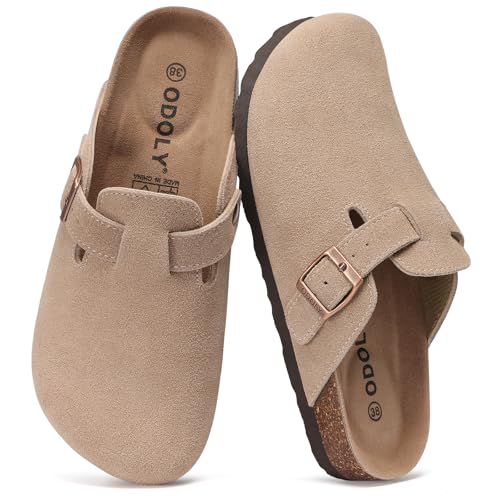Find Your Birkenstock Size
Looking for the perfect fit? Check Out These Best-Selling Birkenstock.
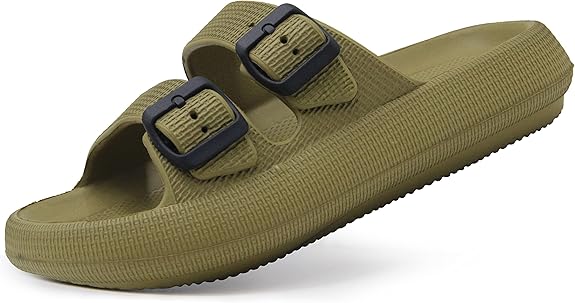

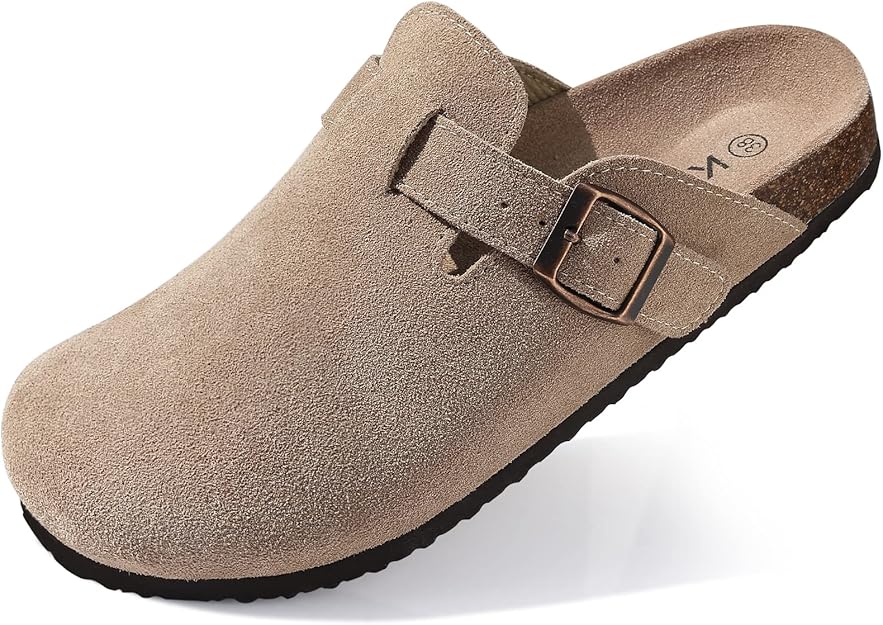
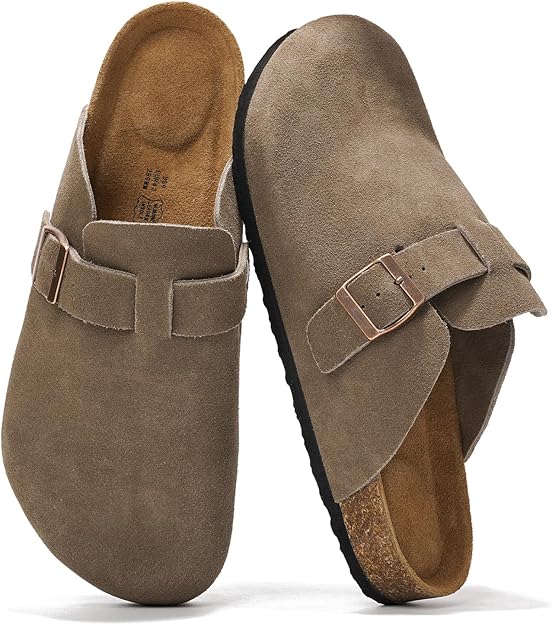
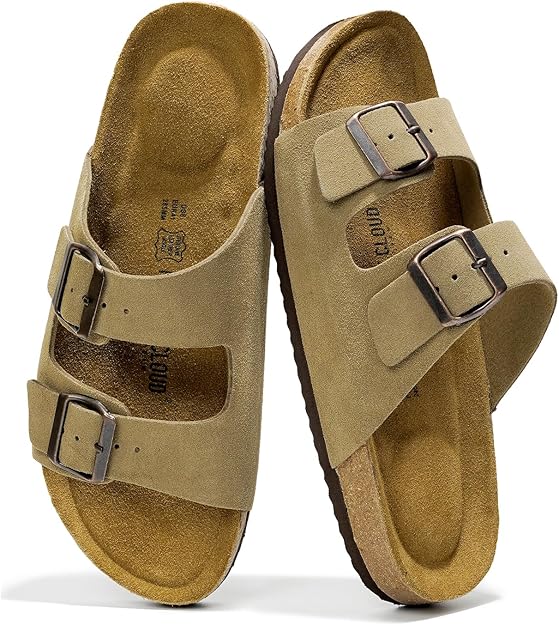
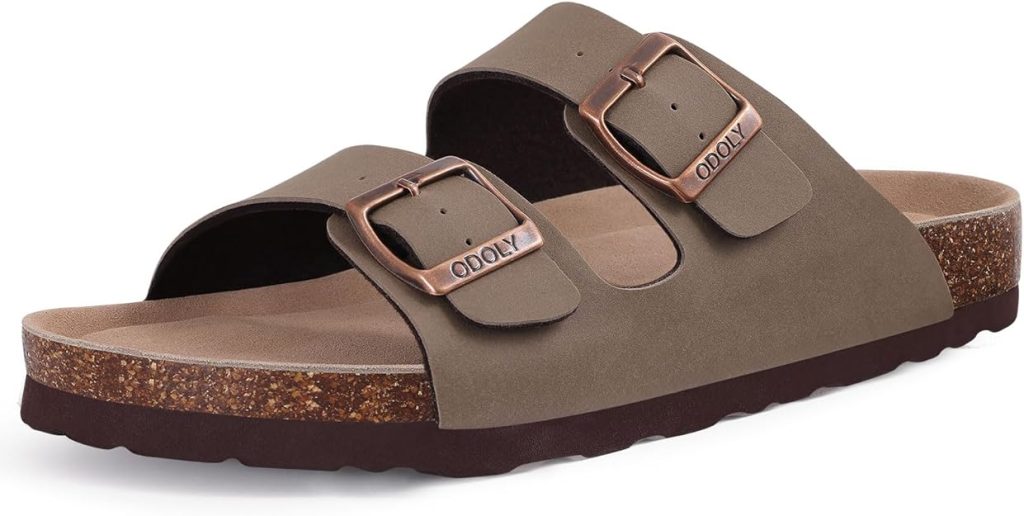
Birkenstock Size Chart – A Comprehensive Guide to Finding the Perfect Fit
When it comes to footwear that combines comfort with style, Birkenstock sandals are one of the most popular choices worldwide. Known for their iconic cork footbeds and ergonomic designs, Birkenstocks offer both a laid-back, casual vibe and the promise of comfort. But finding the right size can be tricky, especially with the brand’s unique sizing system. In this guide, we’ll explore the Birkenstock size chart, how to determine your correct size, and offer tips on choosing the best fit for your feet.
The Birkenstock Footbed: Key to Comfort and Fit
Birkenstocks are designed with a footbed that includes multiple layers to support your feet throughout the day. These layers are:
- Cork and Latex Footbed: The foundation of the shoe, which molds to your foot’s shape over time.
- Suede Lining: Soft material that cushions the feet.
- Jute Layers: Provide strength and durability.
- Rubber Outsole: Offers excellent traction and longevity.
This unique footbed makes it crucial to choose the right size, as it is intended to conform to your feet. The wrong size may lead to discomfort or improper arch support.
Birkenstock Sizing System
Birkenstock’s sizing system may be different from what you’re used to with other shoe brands. Birkenstocks are available in European sizes (often denoted as “EU”) and come in narrow and regular widths. Understanding these terms will help you select the perfect pair for your feet.
EU Size System:
- European sizing for Birkenstocks generally ranges from size 35 to 50.
- The size numbers refer to the length of your feet in centimeters.
- The U.S. size will differ based on the conversion between European and American sizing.
Widths:
- Narrow (Slim): If you have a slim or average width foot, this option is the right choice.
- Regular: For those with a standard or wider foot, the regular width offers a bit more room.
Birkenstock Size Chart
Here’s a detailed Birkenstock size chart to help you determine your ideal size:
| U.S. Men’s Size | U.S. Women’s Size | EU Size | Foot Length (inches) | Foot Length (cm) | Foot Width |
|---|---|---|---|---|---|
| 3 | 4.5 | 35 | 8.5 | 22.0 | Narrow |
| 3.5 | 5 | 36 | 8.75 | 22.5 | Narrow |
| 4 | 5.5 | 37 | 9.0 | 23.0 | Narrow |
| 5 | 6.5 | 38 | 9.25 | 23.5 | Regular |
| 6 | 7.5 | 39 | 9.5 | 24.0 | Regular |
| 6.5 | 8 | 40 | 9.75 | 24.5 | Regular |
| 7 | 8.5 | 41 | 10.0 | 25.0 | Regular |
| 8 | 9.5 | 42 | 10.25 | 25.5 | Regular |
| 8.5 | 10 | 43 | 10.5 | 26.0 | Regular |
| 9 | 10.5 | 44 | 10.75 | 26.5 | Regular |
| 9.5 | 11 | 45 | 11.0 | 27.0 | Regular |
| 10 | 11.5 | 46 | 11.25 | 27.5 | Regular |
| 10.5 | 12 | 47 | 11.5 | 28.0 | Regular |
| 11 | 12.5 | 48 | 11.75 | 28.5 | Regular |
| 12 | 13.5 | 49 | 12.0 | 29.0 | Regular |
| 13 | 14 | 50 | 12.25 | 29.5 | Regular |
Understanding the Birkenstock Fit: How to Choose the Right Size
Step 1: Measure Your Feet
To find the right Birkenstock size, you first need to know your foot length. Here’s how you can measure your feet at home:
- Step 1: Stand on a piece of paper and trace the outline of your foot.
- Step 2: Measure the distance from the heel to the tip of your longest toe.
- Step 3: Compare your measurement with the Birkenstock size chart.
If your foot length falls between two sizes, it’s typically best to go with the larger size. Birkenstocks are designed to conform to the shape of your feet, so a little extra room can make the adjustment period more comfortable.
Step 2: Consider Foot Width
After measuring your foot length, think about your foot width:
- Narrow Width: For those with thinner or average-width feet, the Narrow width will offer a snug fit. Birkenstock’s narrow option is often marked as “Slim.”
- Regular Width: For individuals with wider feet, the Regular width will provide more room.
Birkenstocks are known for their adjustability. Their two adjustable straps (one over the toes and one across the instep) can help create a customized fit.
Step 3: Try the Shoes
If possible, it’s always a good idea to try on Birkenstocks before purchasing. Walk around in them for a few minutes to see how they feel. Keep in mind:
- Birkenstocks need a break-in period, especially the footbed. Over time, the footbed will mold to the shape of your feet.
- The sandal should fit snugly, but not be too tight across the straps or the footbed.
Step 4: Adjust the Straps
Birkenstocks come with adjustable straps that allow you to tailor the fit around your foot. After putting them on, adjust the straps so that the sandal fits comfortably without feeling too loose or tight.
Tips for Ensuring a Perfect Fit
1. Break-In Period
Birkenstocks are known for their cork footbed, which softens and molds to the shape of your foot over time. It may take a few days to a week of consistent wear for the footbed to fully conform to your foot. During the break-in period, you may feel some discomfort, but this is normal and part of the molding process. To speed up the break-in period, try wearing them in short bursts and gradually increasing the time.
2. Be Mindful of Your Arch
Birkenstocks have pronounced arch support, which can be a game-changer for those who suffer from foot pain or need additional support. However, if you’re not used to this kind of support, it may feel different at first. Ensure that the arch aligns with the curve of your foot when trying them on.
3. Always Consider the Shape of Your Foot
- High Arches: If you have high arches, you may prefer a Birkenstock sandal with more arch support. The brand offers models that provide more elevation and cushioning in the footbed.
- Flat Feet: Those with flat feet may also benefit from the contoured footbed in Birkenstocks, which offers support and helps to distribute weight evenly.
4. Footbed Material
Aside from cork, Birkenstock sandals come in various footbed materials, including latex, synthetic, and EVA. Choose the material based on your comfort preference. For example, EVA footbeds are lightweight and waterproof, making them ideal for outdoor activities or beach outings.
5. Seasonal Considerations
Birkenstocks are known for their versatility, but depending on the season, you may want to pick a different model. For warmer months, sandals like the Arizona or Gizeh are popular choices. For colder weather, consider the Boston clogs or Shearling-lined models for added warmth.
Common Questions About Birkenstock Sizing
1. Should I size up or down for Birkenstocks?
If your foot measurement falls between two sizes, it’s usually recommended to size up. Birkenstocks are made to mold to your feet over time, and a bit of extra space ensures a more comfortable fit.
2. How do I know if my Birkenstocks are too tight?
If the straps are digging into your skin or you feel pinching across the foot, your Birkenstocks may be too tight. You should be able to adjust the straps to relieve discomfort. If the fit feels overly tight, consider opting for a larger size.
3. Can I wear Birkenstocks in the rain?
While Birkenstocks are water-resistant, it’s best not to soak them in water. Some models, like those with EVA footbeds, are waterproof, but traditional cork footbeds are not designed for prolonged exposure to water. If they do get wet, dry them at room temperature to preserve the material.
Conclusion
Finding the perfect pair of Birkenstock sandals is about more than just choosing a size. It’s about ensuring that you select the right width, adjust the straps for comfort, and give the footbed time to mold to your foot’s unique shape. By using the Birkenstock size chart above, you can confidently choose the right size and enjoy the legendary comfort that comes with this iconic brand.
Whether you’re looking for a stylish summer sandal or a comfort-oriented everyday shoe, Birkenstocks offer a wide range of sizes, widths, and designs to fit various foot types and preferences. With a little care and patience, your Birkenstocks will become a comfortable and reliable part of your footwear collection for years to come.





